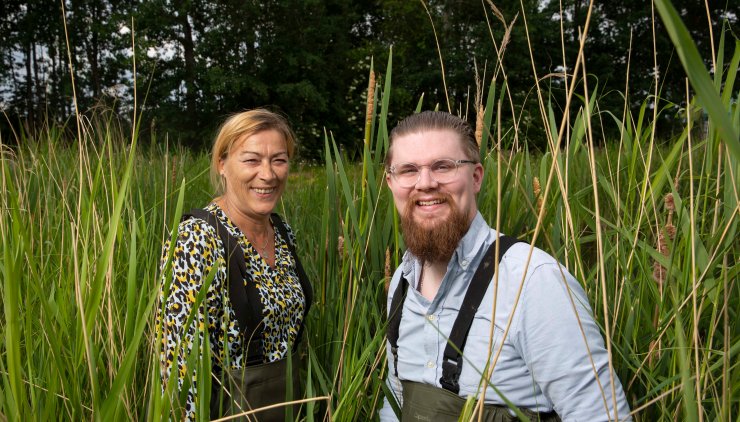-
17 oktober
-
Highlighted
Lecturer and student work together on biodiversity at Stappegoor campus

A large insect hotel, a wadi (overflow pond) and a flower meadow. On the campus of the biology teacher training programme in Tilburg, biodiversity plays a major role. And for good reason. 'Biodiversity has always been in our curriculum,' Kitty explains.
'Slowly but surely, we at Fontys realise how important a physically sustainable environment is in this respect. How do you deal with sustainability yourself and how can you transfer this to others? These are questions we deal with on a daily basis.'
Social biodiversity
According to Kitty, working on the themes of biodiversity and sustainability not only creates a healthy living environment, but also stimulates cooperation and connection with other parties.
'We already notice that other studies are knocking on our door with questions about the field. For instance, we were asked by the English teacher training programme if they could plant a fruit tree to compensate for their paper use. A collaboration between our students and the secondary school Campus 013 has also been established. This connection between different parties is a nice development. Actually, you could also call it biodiversity. Social biodiversity. And that, in turn, produces social resilience.'
Sticking around
Though it is a beautiful development, Kitty says there is still a lot to be done. 'The start is there and I am glad we have turned on the proverbial engine, but actually all of our ideas are still in their infancy. It is important that small initiatives, such as the fruit tree, are granted more quickly and easily. Moreover, it is important that other parties know how to find us and that users of the campus stick around longer. That is why we want to make the site a sticky campus. A place where people like to stick around.'
To make that vision of the future a reality, students from the biology teacher training programme have been challenged with design assignments they can carry out with different clients. One of those students is third-year student Jarno van Beers. 'We get to do our assignments at different locations', Jarno explains.
'I chose to stay with the campus. Together with two other students, I made a design for information boards that tie in with these projects. On these, we provide relevant information so that campus users know what they are looking at. This also makes them stay on the site longer.'
'Something to be proud of'
The information boards by Jarno and his fellow students will be realised before the end of the academic year. Jarno: 'We are going to develop the signs ourselves, but there is an awful lot involved. Not only do we have to think about what the signs will look like and what information is relevant, we also have to look at the financial aspect and whether the signs are vandal-proof. We hope to create something that will last for years to come and that we can be really proud of.
Kitty adds: 'It would indeed be nice if eventually there will be a kind of green walkway, which the next generation of students and staff can also enjoy. Again, it's a great start. Now we really need to start taking steps together.'
